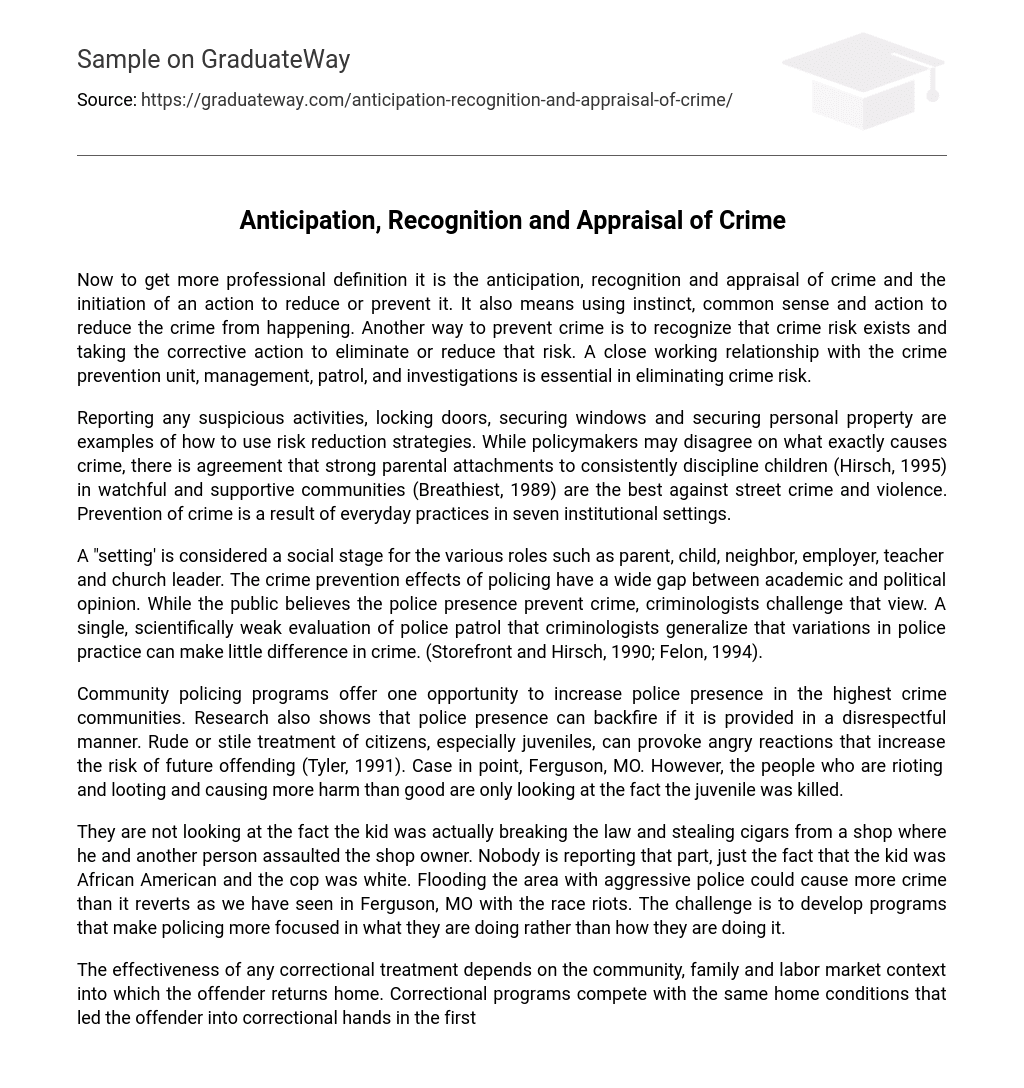Now to get more professional definition it is the anticipation, recognition and appraisal of crime and the initiation of an action to reduce or prevent it. It also means using instinct, common sense and action to reduce the crime from happening. Another way to prevent crime is to recognize that crime risk exists and taking the corrective action to eliminate or reduce that risk. A close working relationship with the crime prevention unit, management, patrol, and investigations is essential in eliminating crime risk.
Reporting any suspicious activities, locking doors, securing windows and securing personal property are examples of how to use risk reduction strategies. While policymakers may disagree on what exactly causes crime, there is agreement that strong parental attachments to consistently discipline children (Hirsch, 1995) in watchful and supportive communities (Breathiest, 1989) are the best against street crime and violence. Prevention of crime is a result of everyday practices in seven institutional settings.
A “setting’ is considered a social stage for the various roles such as parent, child, neighbor, employer, teacher and church leader. The crime prevention effects of policing have a wide gap between academic and political opinion. While the public believes the police presence prevent crime, criminologists challenge that view. A single, scientifically weak evaluation of police patrol that criminologists generalize that variations in police practice can make little difference in crime. (Storefront and Hirsch, 1990; Felon, 1994).
Community policing programs offer one opportunity to increase police presence in the highest crime communities. Research also shows that police presence can backfire if it is provided in a disrespectful manner. Rude or stile treatment of citizens, especially juveniles, can provoke angry reactions that increase the risk of future offending (Tyler, 1991). Case in point, Ferguson, MO. However, the people who are rioting and looting and causing more harm than good are only looking at the fact the juvenile was killed.
They are not looking at the fact the kid was actually breaking the law and stealing cigars from a shop where he and another person assaulted the shop owner. Nobody is reporting that part, just the fact that the kid was African American and the cop was white. Flooding the area with aggressive police could cause more crime than it reverts as we have seen in Ferguson, MO with the race riots. The challenge is to develop programs that make policing more focused in what they are doing rather than how they are doing it.
The effectiveness of any correctional treatment depends on the community, family and labor market context into which the offender returns home. Correctional programs compete with the same home conditions that led the offender into correctional hands in the first place. In order for corrections to work, it may require the same changes needed to make programs and practices in other settings more effective. In my opinion, everything always begins at home.
If the home structure is broken and the person living in this broken home is not strong enough to overcome the brokenness, they will become a permanent member of the correctional department data base. It is up to the person to want to make the change to go down the right path. The correctional department cannot always reach a criminal to change their path. It could be a life that is the only life they have ever lived and they don’t feel they deserve better or don’t have the right person in their life to direct them o that right path.





